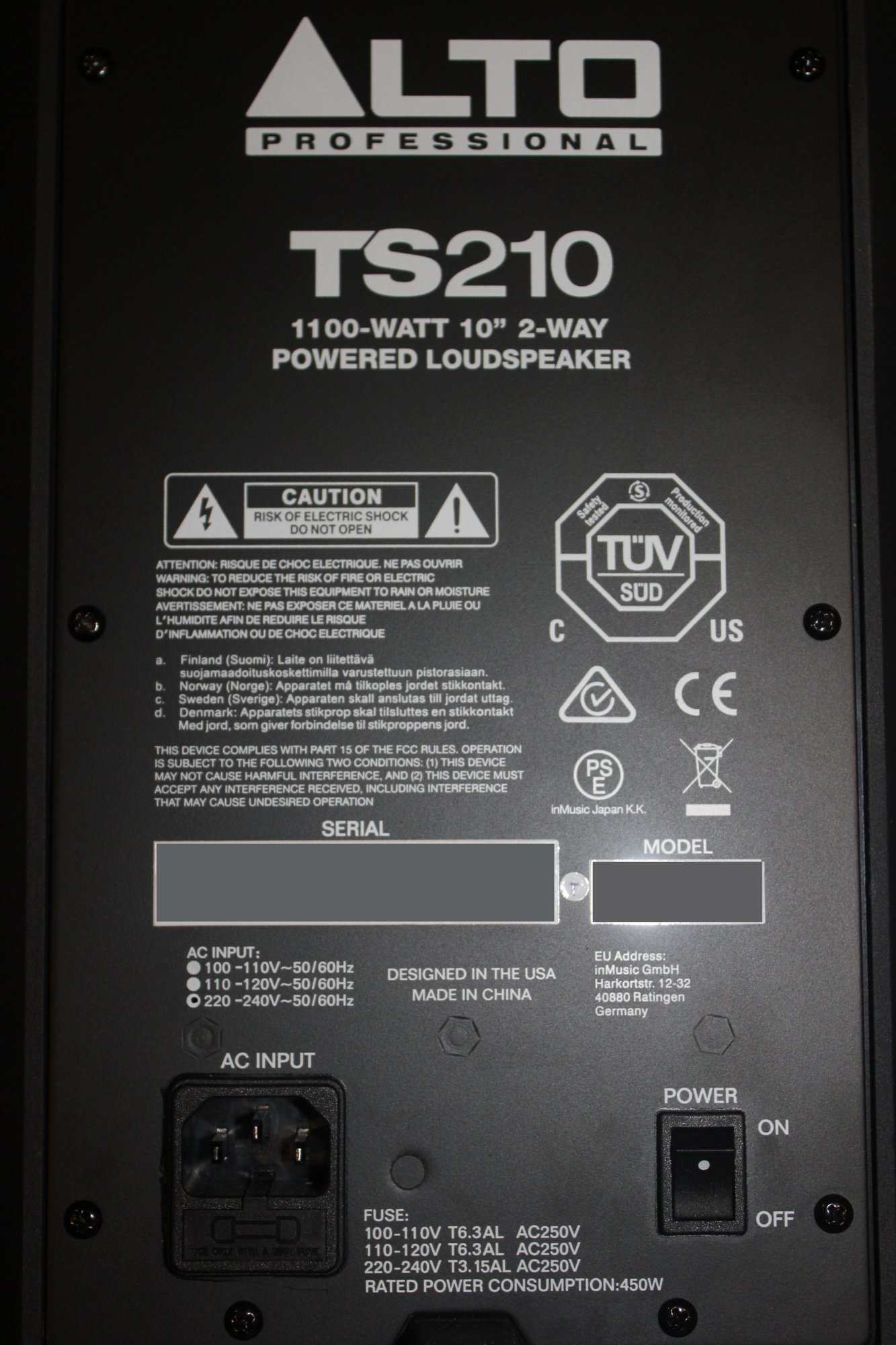So a couple of months back I got a pair of Alto True Sonic TS210 PA speakers for outdoor events. However the wattage rating of them is strange to say the least.
According to https://www.altoproaudio.com/downloads/Alto-Professional-TS210-Spec-Sheet.pdf, they have a continuous RMS power rating of 550W and a peak power rating of 1100W.
How can that be when Peak Power = RMS Power * √². 550W RMS should be 777W Peak.
Further more, they have an mains input power rating of 450W (See bottom of photo).
Even if the 550W/1100W power rating is just that of the physical drivers and not what the built in amp puts out (Block diagram in PDF says 200W HF Power Amp, 400W LF Power Amp), that does not explain the ratio between RMS and Peek rating based on that RMS is Peak Power ÷ √².
Any ideas?
Regards: Elliott.
According to https://www.altoproaudio.com/downloads/Alto-Professional-TS210-Spec-Sheet.pdf, they have a continuous RMS power rating of 550W and a peak power rating of 1100W.
How can that be when Peak Power = RMS Power * √². 550W RMS should be 777W Peak.
Further more, they have an mains input power rating of 450W (See bottom of photo).
Even if the 550W/1100W power rating is just that of the physical drivers and not what the built in amp puts out (Block diagram in PDF says 200W HF Power Amp, 400W LF Power Amp), that does not explain the ratio between RMS and Peek rating based on that RMS is Peak Power ÷ √².
Any ideas?
Regards: Elliott.



